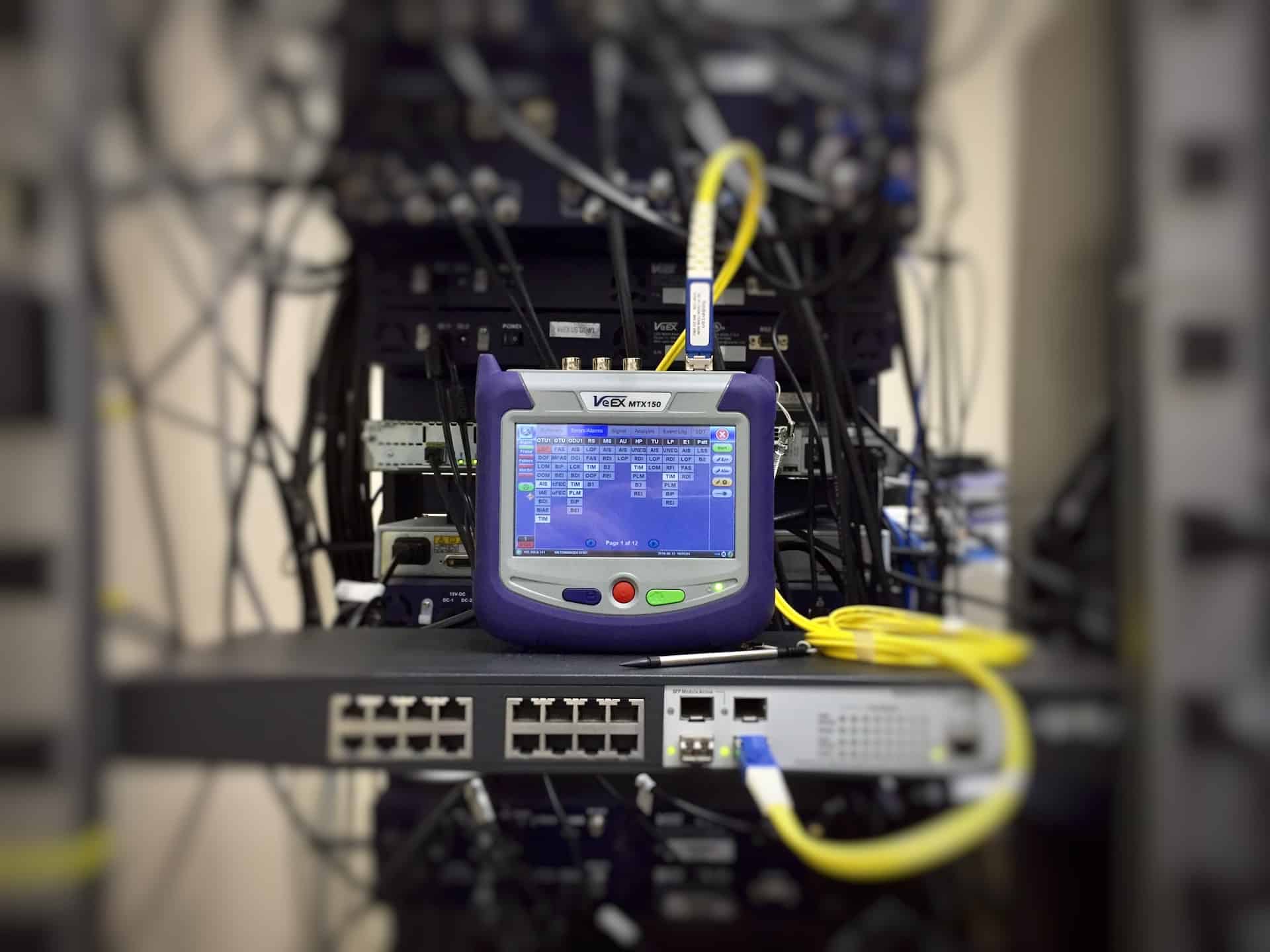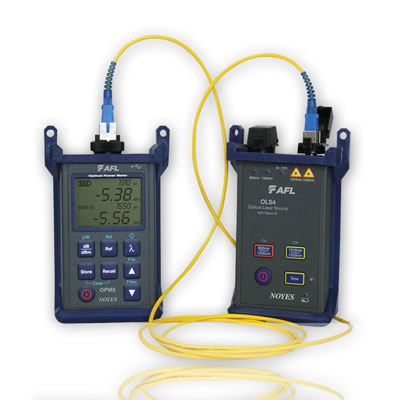Discover the Value of Optical Fiber Testing in Modern Telecommunications
In the realm of contemporary telecommunications, the significance of optical fiber testing can not be overstated, as it works as the backbone for ensuring network dependability and efficiency. By implementing regular testing methods, operators can preemptively identify prospective issues such as signal degradation, thus protecting against interruptions that could prove expensive. Advanced strategies like Optical Time-Domain Reflectometry play a crucial role in this procedure, yet numerous may forget the more comprehensive implications of these methods. What are the particular benefits that normal testing offers, and how might it form the future landscape of telecoms?

Recognizing Optical Fibre Testing
Optical fiber testing is an important process in telecommunications that makes certain the stability and performance of fiber optic networks. This testing includes a series of treatments developed to review the physical and functional features of optical fibres - optical fibre testing equipment. Trick parameters evaluated include optical power loss, data transfer ability, and fault place, which are vital for keeping high-grade interaction web links
The testing procedure generally includes using specific tools such as Optical Time-Domain Reflectometers (OTDR) and Optical Power Meters. OTDRs are employed to identify and define faults, entwines, and adapters within the fibre, while power meters measure the transmitted light signal strength to establish effectiveness.
Additionally, testing is performed at numerous stages, including throughout installment, maintenance, and troubleshooting, to ensure that the network satisfies market requirements and functional requirements. Compliance with requirements set by companies like the International Telecommunication Union (ITU) and the Telecommunications Sector Association (TIA) is paramount.
Advantages of Routine Examining
Routine screening of optical fibers returns numerous benefits that significantly boost network reliability and performance. One of the primary benefits is the very early discovery of potential problems, such as breaks or deterioration in the fibre, which can bring about expensive downtime if left unaddressed (optical fibre testing equipment). By identifying these problems proactively, telecommunications suppliers can reduce service disturbances and make sure constant connection for their customers
Furthermore, normal testing helps to maintain the honesty of signal quality. As optical fibres age, their performance can be affected by aspects such as environmental problems and physical stress and anxiety. Regular evaluations permit the monitoring of signal loss and total transmission efficiency, making sure that the network operates at ideal degrees.
One more substantial advantage is conformity with industry requirements. Regular screening supports adherence to regulatory needs, thus reducing lawful and monetary threats associated with non-compliance. In addition, it boosts the overall life-span of the fiber facilities by assisting in prompt repair and maintenance.

Common Examining Techniques
Testing optical fibres utilizes various approaches to make certain the integrity and efficiency of telecommunications networks. Among one of the most common strategies is Optical Time Domain Reflectometry (OTDR), which assesses the whole length of the fibre by sending a pulse of light and determining the reflections brought on by imperfections or breaks. This method gives thorough details about the location and severity of mistakes.
An additional widespread method is making use of Optical Power Meters, which measure the quantity of light sent via the fibre. This strategy assists figure out the loss of signal stamina, guaranteeing that it meets market criteria. Furthermore, Aesthetic Mistake Locators (VFL) are employed to recognize breaks or severe bends in the fiber by predicting a visible laser light right into the cable television.
Insertion loss testing is also essential, as it quantifies the loss of signal power resulting from links and splices within the network. The use of Polarization Setting Diffusion (PMD) testing evaluates the impact of fiber characteristics on signal integrity.
Each of these approaches plays an essential function in maintaining the efficiency and integrity of optical fiber networks, inevitably adding to smooth telecommunications operations.
Effect On Network Efficiency
The honesty and efficiency of optical fibre networks straight find influence total network efficiency. In check out here contemporary telecoms, the efficiency of information transmission depends greatly on the top quality of the optical fibers made use of. Any deterioration in the fibre's condition-- whether as a result of physical damage, contamination, or extreme bending-- can bring about enhanced depletion and signal loss, significantly impacting information stability and rate.
Routine optical fiber testing is important to recognize and fix potential problems before they show up as network failings or downturns. Techniques such as Optical Time Domain Reflectometry (OTDR) and insertion loss testing enable professionals to determine the efficiency of fiber links accurately. These tests not only assess the physical condition of the fibres yet likewise ensure compliance with market criteria, thus protecting the network's integrity.
Moreover, a properly maintained optical fiber network adds to reduced functional costs and improved customer complete satisfaction, as end-users experience less disruptions and greater data prices. Eventually, the emphasis on rigorous optical fibre testing methods functions as a cornerstone for sustaining robust telecommunications infrastructure, guaranteeing that solution suppliers can meet the expanding needs for data transfer and connectivity in today's digital age.
Future Trends in Testing
As we look in advance, advancements in modern technology are poised to reshape optical fiber testing in telecommunications. The increase of automation and expert system (AI) is expected to enhance the performance and accuracy of screening processes. Automated testing systems can carry out thorough evaluations with marginal human treatment, substantially minimizing the possibility for mistakes and accelerating time-to-deployment.
In addition, the assimilation of artificial intelligence algorithms will certainly make it possible for predictive maintenance, allowing network service providers to visualize possible issues prior to they rise into failures. This aggressive method not just boosts network dependability but additionally optimizes functional expenses.
One more emerging trend is the growth of mobile testing devices that offer real-time analysis - robotic vision. These devices will encourage professionals to perform on-site diagnostics quickly, assisting in quicker resolutions and improving solution quality
The development of 5G networks additionally necessitates the evolution of screening techniques. As data transfer needs boost, conventional screening methods may no longer are sufficient. Ingenious services such as optical time-domain reflectometry (OTDR) and advanced spooky evaluation will end up being more vital in making certain the honesty and performance of high-speed links.

Verdict
Finally, optical fiber testing is crucial for making certain the stability and reliability of contemporary telecommunications networks. Normal screening practices not just aid determine prospective concerns such as signal loss and mistakes however likewise contribute to enhanced network efficiency and client contentment. As the demand for seamless connection remains to grow, the fostering of advanced screening methods will certainly play an essential role in preserving top notch network standards and sustaining the evolving landscape of telecoms.
 Joseph Mazzello Then & Now!
Joseph Mazzello Then & Now! Joshua Jackson Then & Now!
Joshua Jackson Then & Now! Marques Houston Then & Now!
Marques Houston Then & Now! Michael C. Maronna Then & Now!
Michael C. Maronna Then & Now! Robin McGraw Then & Now!
Robin McGraw Then & Now!